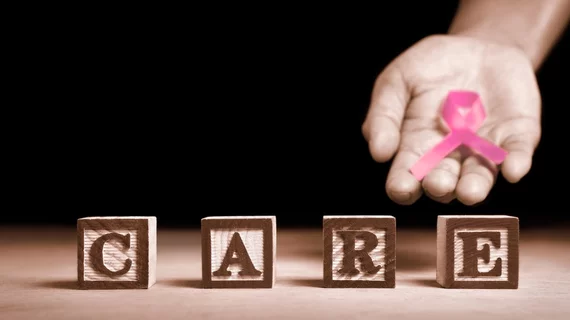Breast MRI in cancer survivors results in more unneeded biopsies
Adding MRI to mammography screening for breast cancer detects more cancers, but results in more unnecessary biopsies, according to a June 4 study published in Radiology.
In fact, over the seven year study, breast MRI detected 2.6 more cancers per 1,000 exams compared to mammography among breast cancer survivors. But breast MRI resulted in more than double the number of biopsies compared to traditional screening, according to lead author Karen Wernli, PhD, from the Kaiser Permanente Washington Health Research Institute in Seattle, and colleagues.
"Evidence about breast MRI's benefits and harms in breast cancer survivors is lacking," added co-author Karla Kerlikowske, MD, a professor of medicine and of epidemiology and biostatistics at the University of California, San Francisco, in a prepared statement. "This study helps fill that gap. And women with prior breast cancer need to remember to continue with annual mammography."
The researchers analyzed more than 33,000 mammograms and 2,506 breast MRIs from 2005 through 2012. In total, the data represented 13,000 women who survived breast cancer, all at least 18 years old with a mean age of 60 who participated in the Breast Cancer Surveillance Consortium.
Breast MRI had a cancer detection rate (CDR) of 10.8 per 1,000 exams compared to mammography’s CDR of 8.2 per 1,000 examinations. However, breast MRI had a biopsy rate of 10.1%, double that of mammography’s 4% rate.
Importantly, there were no differences in sensitivity or specificity between the two modalities.
"People often think more testing is better," Wernli said in an RSNA statement. "That might be true for some women, but not necessarily all. It's important for clinicians and women to be aware of both the benefits and harms that can come from imaging."
The study drives home the complexity of deciding whether to add new imaging tests into cancer screening programs; some women may feel reassurance after a cancer-free biopsy, while others may want to avoid the invasive procedure altogether.
"As someone who has had breast cancer and has listened to many other women across the country as part of this study, having to get another biopsy after already being treated for cancer raises women's anxiety and distress until they have the result—but most will endure the stress to be sure about whether the finding is cancer," said co-author Dianna Johnson with Kaiser Permanente Washington Health Research Institute.

